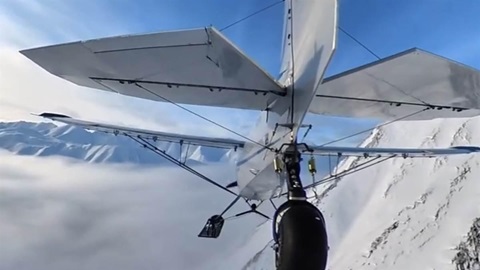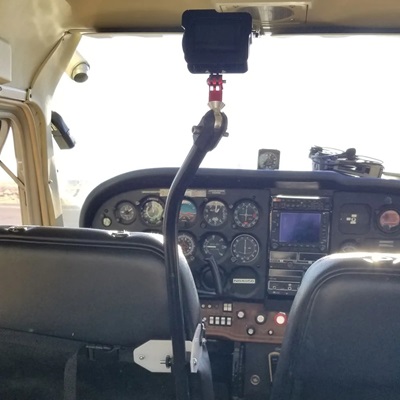How I use cameras to improve my flying
Starting around 2015, I began making instructional YouTube videos for our channel, FLY8MA Flight Training. A by-product of recording my flights was also having clear, documented evidence of every mistake I ever made, both on video and audio. Gone were the days of blaming “a gust of wind” on my poor centerline control. The video clearly showed a steady-flowing windsock with a lack of aileron input on my part. It didn’t take long to realize not only the value it brought to students watching our FLY8MA YouTube videos but also the value it brought to me to improve my own skills as a pilot and flight instructor.

I soon began using GoPro’s on the aircraft during flight lessons with students to record the audio of ATC, the attitude of the aircraft, as well as the flight controls. Recording an inside and outside view proved to be invaluable in debriefing sessions with students, benefiting them with a better understanding of what they were really doing on the flight controls versus what they thought they were doing. Film review was truly a big step forward in flight instruction technology (the kind that only comes along every 10-20 years or so in aviation). There was, however, pushback from the older CFIs, pilots, and FAA-loving types around the airport, mostly due to confusion over FAA regulations.
It was sometime in 2017 that a student introduced me to a better way to mount the cameras to the aircraft, utilizing the new FlightFlix Rock Steady mounts at the time. They were a vast improvement in safely securing the cameras to the aircraft. Flight Flix actually produced an aviation grade camera mount that would be safe mounted to the aircraft. It was also a big step forward on the regulatory side; you can find FAA compliance docs on their website.

We still use FlightFlix camera mounts here at FLY8MA.com when filming. Normally running 5-7 camera angles for any of our given instructional videos. We have settled on three preferred mounts and mounting angles for our regular instructional flights with our students and recommend the same to certificated pilots out there interested in recording their flight to improve skills or create the next viral video. Typically, we will run a Rock Steady Surface Mount with a VibeX base on the wingtip, capturing the entire aircraft and flight controls. The Vibex mount removes the “jello effect” of early YouTube videos from engine vibration. Second, the Jumpseater Mount behind the seats looking forward at the panel, yoke, and windscreen. Last, a camera mounted to the tailspring or bottom of the horizontal depending on the aircraft.
Next time you are tired of watching airplane videos, grab a camera and an FAA compliant camera mount and film a regular flight in the traffic pattern. You can feel good about filming and sharing with your friends on social media, or using it to debrief yourself and improved your skills. Catch the small subtle details of things you can work to improve on your own with your “camera debrief” rather than waiting for your next BFR.
